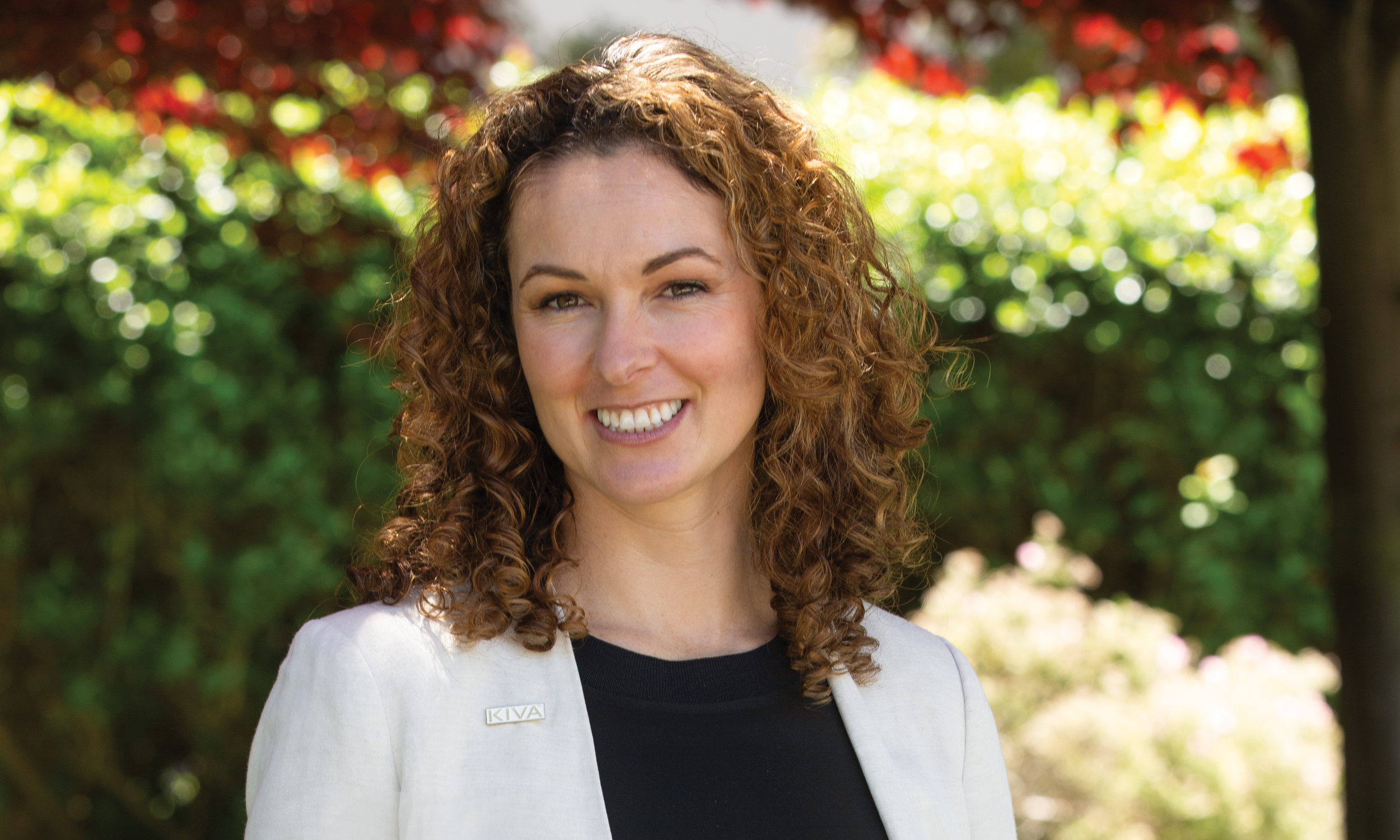A brand name has to make sense. It has to stand out. It has to be a name for a reason and it has to tell the consumer the story of the brand.” — Kristi Knoblich Palmer
KRISTI AND SCOTT PALMER founded Kiva Confections in 2010, developing silky-smooth, cannabis-infused chocolate bars in their own home kitchen in Alameda, CA. Over the years, the couple has expanded Kiva’s product line far beyond those original Kiva Bars, adding a variety of flavorful blends and formats to its award-winning edibles lineup that now includes gummies, chews, mints and bites.
The Palmers have built Kiva into one of the biggest multi-state cannabis brands in the United States by revenue. Among stand-alone U.S. brand houses, Kiva ranks third in sales volume per our research in partnership with market research firm BDSA. The company employs more than 400 people and supplies hundreds of dispensaries in 10 U.S. states and throughout Canada. Kiva has also proven to be a cannabis career incubator—former employees like TSUMo Snacks founder Caroline Yeh cut their teeth at the company before launching their own successful businesses.
WATCH THE INTERVIEW!
Catch the full convo with Kristi Palmer at gctmag.com/podcasts/kristi-palmer
Global Cannabis Times contributor Tom Adams recently sat down with Kristi Palmer as part of our deep dive into cannabis branding for this issue.
This interview that has been edited for length and clarity.
TOM ADAMS: Kiva Confections’ award-winning edibles have loyal customers in hundreds of dispensaries throughout the U.S. and Canada, and Kiva Sales and Service is one of the leading wholesale distributors in California. Kiva helped pioneer the cannabis branded products revolution and led the way in developing multi-state expansion strategies as well. Kristi, we’re thrilled to speak with you today at Kiva’s R&D facility here in Alameda, California.
KRISTI PALMER: Thanks for having me, Tom. Super excited to be talking with you today.
TA: So what’s the Kiva origin story?
KP: We were like a starving artist couple, basically. We looked to the cannabis industry to provide kind of that next step for us, right? And to subsidize our photography work. We started cultivating and that got us into the dispensaries. From there it was like, okay, we’re not natural-born cultivators [laughs]. But you could see that there was a huge opportunity for edibles. So there was a bit of a lightbulb moment. Scott was in a chocolate shop looking at the chocolates and he went, “Oh my gosh, edibles and chocolate, cannabis and chocolate— what a match made in heaven.”
TA: What about some of the milestones in Kiva’s history? For instance, the first move beyond chocolate bars, what sparked that?
KP: The big milestone in terms of adding our first additional product line was Terabytes, our chocolate-covered espresso bean. That was a really big move for us, probably 2013 or 2014. Camino [a gummies brand] originally started off as a hard candy. We didn’t have any data, we didn’t know what was going to popular, right? About halfway through the development process for Camino, BDSA launched in Colorado and we were able to learn that the gummy is king. That it is such a bigger market segment than hard candy, so we pivoted and decided, okay, Camino would be a gummy instead.
TA: So you really had just a couple of product types in hand when you made your first move out of California?
KP: Yes, we signed [our first out-of-state distribution] deal in Arizona in 2014.
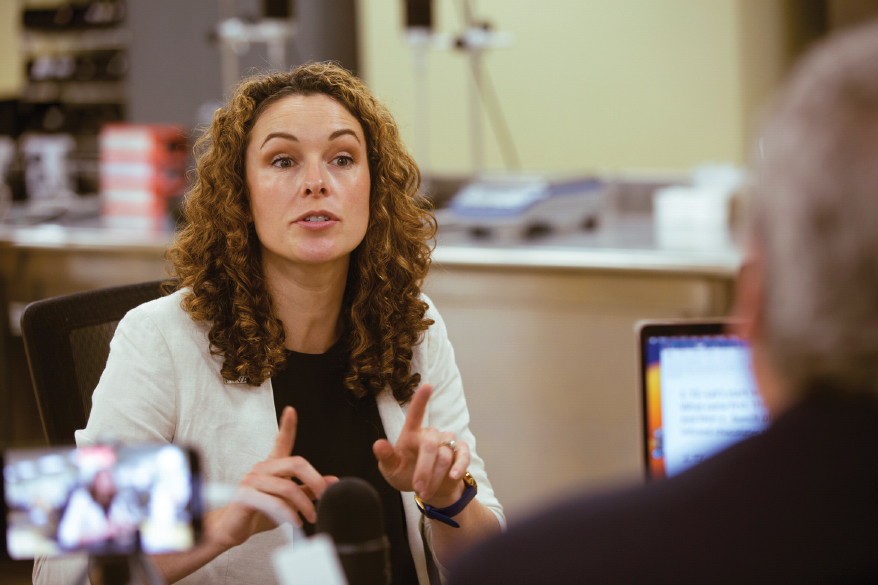
WHAT’S IN A NAME: The brand power of Kiva Confections starts with the names of its core edibles product lines: Kiva, Camino, Lost Farm, Petra and Terra.
TA: That’s what I wanted to get into, is that brand expansion deals have evolved over the time. How have they evolved?
KP: There have been so many changes. Almost 10 years have gone by since that first deal. The whole industry has made a huge shift in that time. There were some creative deal structures in the early days—if you recall, people were building their royalties into the price of packaging. So if you were buying a carton for $2 instead of a dollar, that was how people were making their money. There’s been some big evolution from that. I think today’s deals are probably just a bit more cut-and-dry.
TA: What was the genesis of becoming a wholesaler in California? Did that come before you started doing lots of out-of-state deals or the other way around?
KP: We actually started doing distribution before edibles. Because we were doing clones in California. Running Scott’s old high school car [laughs] right to the dispensaries to make deliveries. We got started there with building a network of dispensaries.
A few years in, we looked up and said, “Other folks, other California brands would probably like to plug into this network and we can help them get to market.” I think at that point we had probably 250 or 300 stores when we first offered those services, probably around 2013 or 2014.
Distribution then became a very strategic kind of move for the business. And it has proven to be more and more so as the company has grown. You have to have these foundational things to be a good distributor—you have to be a good partner to your retailers so they want to do business with you.
TA: Let’s talk a little bit about the creative part of marketing. Let’s start with the Kiva name. Where did it come from?
KP: A kiva is an underground ceremonial meeting place where Native Americans would gather for their spiritual ceremonies. It’s very beautiful. The word “Kiva” itself really lends itself beautifully to cannabis and chocolate in the community. But the syllables of the name came before the meaning of the name. We originally had a different name for the company, which I won’t tell you because it’s too silly to expose [laughs].
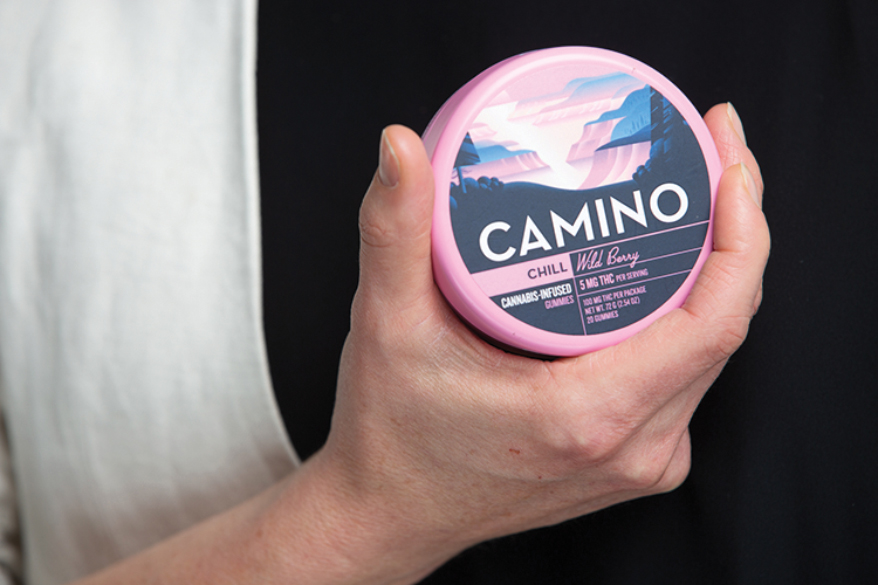
GUMMING UP THE WORKS: Kiva initially made its name with its signature infused chocolate bars but the Camino line of gummies—originally envisioned as a hard candy product—is now the company’s top seller.
TA: Everybody has their dark secrets. That’s fine [laughs].
KP: We were going down the path with that name. We had the boxes designed. Scott calls up a trademark attorney and she’s like, “Oh, no, sir, do not do that. That’s not a good one.” So we ended up going back to the literal drawing board and writing down all these syllables and names that had a similar kind of feel to what we were trying to go for. And then “Kiva” came up and Scott called his mom and said, “What do you think about the word ‘Kiva’?” And she was like, “Oh, yeah.” She knew exactly what it was and told him that description. And we were like, “Nice. Okay, cool. That totally works.”
We loved the sort of words that had a natural, earthy association with them. “Terra,” kind of meaning dirt or soil or earth. And “Petra.” Petra aimed to bring out the flavors of the spice trade from decades and centuries ago. Petra is in Jordan, where the Silk Road ran through. “Camino” is the road that goes through California connecting all of the missions to each other. Camino [gummies] sort of transport you with these tailored experiences.
TA: How important is a brand name? Is it kind of everything? You’ve got to have an acceptable name, but is it a major driver of popularity, do you think?
KP: I think it has to make sense. It has to stand out and it has to be a clear word. It can’t have too many pre-associations for people. The idea is to have it be vague enough but also really tell a story. It has to be a name for a reason and help tell that whole story to the consumer about the brand.
TA: As far as relative success, is Camino the biggest brand in your stable?
KP: Yes, Camino is the biggest. It’s the breadwinner, essentially.
TA: Let’s dig into specific markets a little bit, both existing and new markets for Kiva. Of the states where you currently distribute, where do you expect the biggest growth in the next year, year-and-a-half?
KP: I think Illinois is going to continue to be an awesome, awesome market. There are some new product formats that we can put out there. Lost Farm is going to be a big driver for us there. Michigan, Massachusetts, those are two really awesome states that are doing really well. Arizona is another great, solid consumer base and market, and really kind of more on the stable side of things.
TA: What about Oklahoma? How has it been different from other markets you’ve entered into?
KP: Anyone who wants a license can get a license there, which is very interesting, versus most other markets where that is absolutely not the case. That has created a really interesting dynamic where there are a million stores and not that many people. It’s a bit of a challenge trying to reach the market through all these stores that may or may not even be open next week or next year.
TA: Let’s talk about New York because I’m amazed that you guys are this close to launching there. There’s not a lot of stores in New York yet. They are opening the market very deliberately.
KP: We’re really excited about our partner in New York. They are serious and invested and they’ve been commercializing our product out there. They’ve got the texture, they’ve got the color nice. It’s going great.
TA: Are there enough stores that you’ve been able to present Kiva products to consumers there yet?
KP: Not yet, no. We haven’t officially launched in New York. But gosh, last time I was out there a month ago, there were like eight stores, which is really small [laughs].
TA: Yeah. Indeed. One last state outside of California before we come home—New Jersey. It’s sort of like New York but a little bit further along, right? But it’s a very MSO-dominated, multi-state operator-dominated state, and they are going to tend to favor their own brands over partnering with a third-party vendor like Kiva, I assume. What’s the strategy in New Jersey?
KP: In New Jersey we just partnered with Garden Society. It’s a woman-owned brand with products here in California. We did a little you-scratch-my-back, I-scratch-yours kind of a cross-deal. We’re excited to be working with them, having them make our products and they’re not an MSO, right? You get a little bit of neutrality when you’re not in bed with one single MSO.
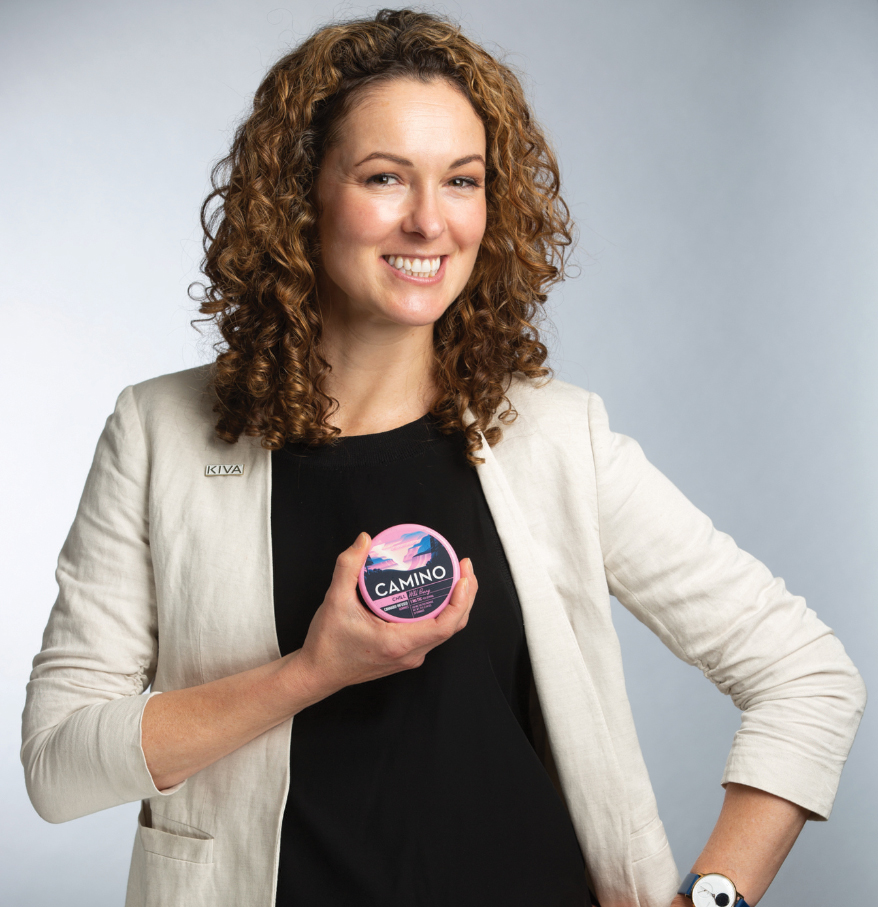
“If a product line is so unique that it needs to stand on its own and speak its own kind of language, we’ll split it off and do another brand.” — Kristi Knoblich Palmer
TA: You talked to our colleague Jon Purow early in the year. One of the themes you touched on with him was, keep the deal simple. Then I saw this [Garden Society] deal and I went, “Well, that ain’t simple.” This is maybe the most complicated, innovative deal I’ve heard of yet.
KP: The key is, if you’re gonna do these types of deals, it better be with somebody that you can trust and that both of you have the same ethos. I think Garden Society and Kiva really align nicely.
Advertisement
TA: They’ve got one approach to branding and you’ve got another. You guys have got one name, one brand per product type. They’ve got a name that has multiple product types under it. Is it too soon to tell what’s the right approach? Or is there no right approach? It’s going to be different for everybody on a case-by-case basis?
KP: I think it’s too soon to tell. I don’t think there’s right and wrong. How we’ve looked at it is, if the product line that we want to come out with is so unique from our other items that it needs to stand on its own and speak its own kind of language, then fine, we’ll split it off and do another brand.
TA: Let’s talk about your stint as president of the CCIA [California Cannabis Industry Association] at a really critical time. You blew my mind when you got up in front of one meeting in Sacramento several years ago and said, “This is an industry in crisis.” How did Kiva survive such a rough time for the California cannabis industry? You did go through some resetting, letting some people go. But five years later, you’re expanding again. How did that come about?
KP: It was Jan. 1, 2018 when we woke up in the morning, the first day of licenses, the first day of rec, and we had like 10 stores that we could work with. We went to bed the night before and we had 1,200 that we could work with. Wow. So it was just like, the sky was falling, right? You were just like, “Oh my God, what is happening?” Yeah, that was “Oof.” That gives me PTSD.
TA: It’s probably never happened in any other product category, when you think about it. No other distributors ever had to deal with that.
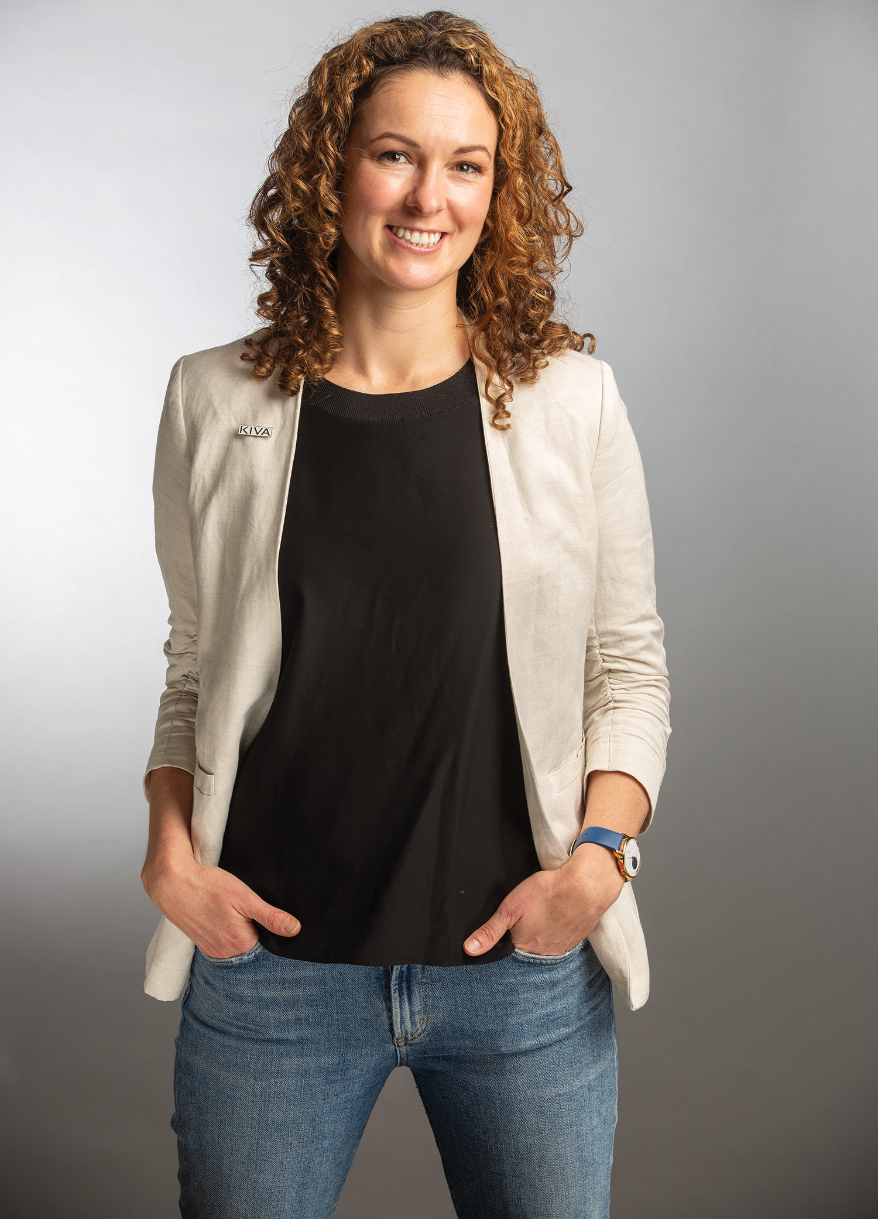 PHOTOS BY KIM KULISH PHOTOGRAPHY
PHOTOS BY KIM KULISH PHOTOGRAPHY
KP: We had not raised any money up until that point. Then all of a sudden, you’re in free-fall mode and you’re like, okay, now it’d be a good time to have a little cushion in the bank so we can continue to hire more experienced folks to help us get through this crazy time.
We did two big things. Hired a few executive level folks to help run the business. Operations, sales, distribution and marketing executives were some of the key hires that year. And then at the end of the year, we launched Camino.
TA: You put together a whole staff of pros you’ve hired in the meantime to handle such a big launch for the first time.
KP: Yeah. The timing was awesome.
TA: That was a crisis year, 2018. Where are we now? The elimination of the $10-an-ounce cultivation tax, that’s got to help everybody. But is it going to be enough?
KP: So, yeah. Are we out of the crisis? No. Because the California legal market is shrinking. Which is not great. And if it continues to shrink, it will trigger an increase in the excise tax. Talk about a nail in the coffin for the already struggling market. Because we’re just not competing well enough with the unlicensed operators. In addition, there’s not enough retail. There’s just no place to go in, say, Danville, CA. You can’t buy something at retail in some of these very densely populated, suburban soccer mom places. Those are places that would be such great markets for cannabis.
TA: Especially for Kiva.
KP: I think every year, you see the stigma of cannabis get chipped away at a little bit more. But we still have a long, long way to go.
TA: Because of that stigma, everybody seems to have a story where you had to tell somebody close that you were going into the cannabis industry. Did that happen to you?
KP: Good question, I love these. You know, it wasn’t either of my parents because my parents are total cannabis advocates.
But there was an uncle of mine. We had in our garage an extraction setup that Scott was tinkering with and we hosted Easter at our house. My uncle, he’s a doctor and my dad’s older brother. And a great role model for me and for others.
He comes into the garage and he’s like, “What are you guys doing here? This looks like a meth lab. This does not look good.” We were like, “Believe us, it’s gonna be fine. There’s the Cole Memo [the 2013 Obama administration announcement that the U.S. government would not enforce federal marijuana prohibition in legal states].”
TA: This has been fascinating both business-wise and personally to hear that story and all of your insight into the industry. I appreciate very much your time today and look forward to talking again.
KP: Sounds great, Tom. Thank you so much. Take care.
Advertisement
